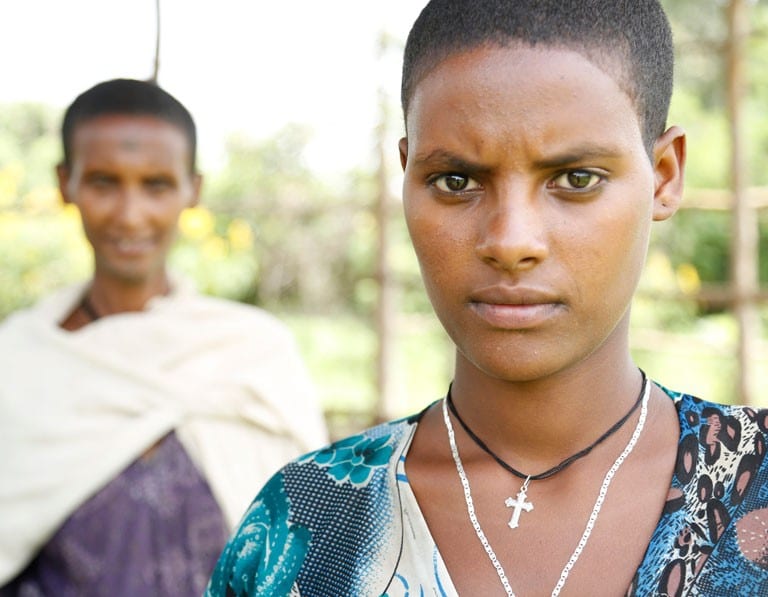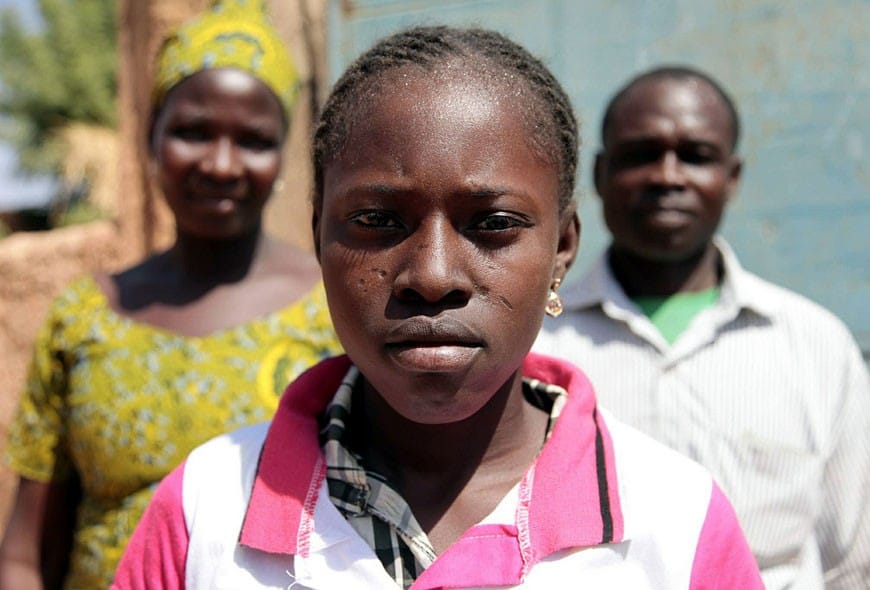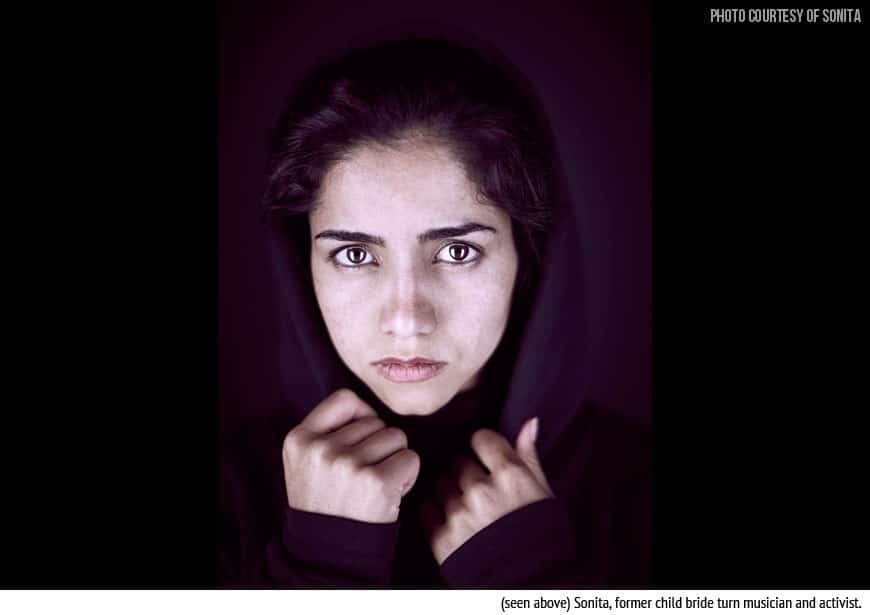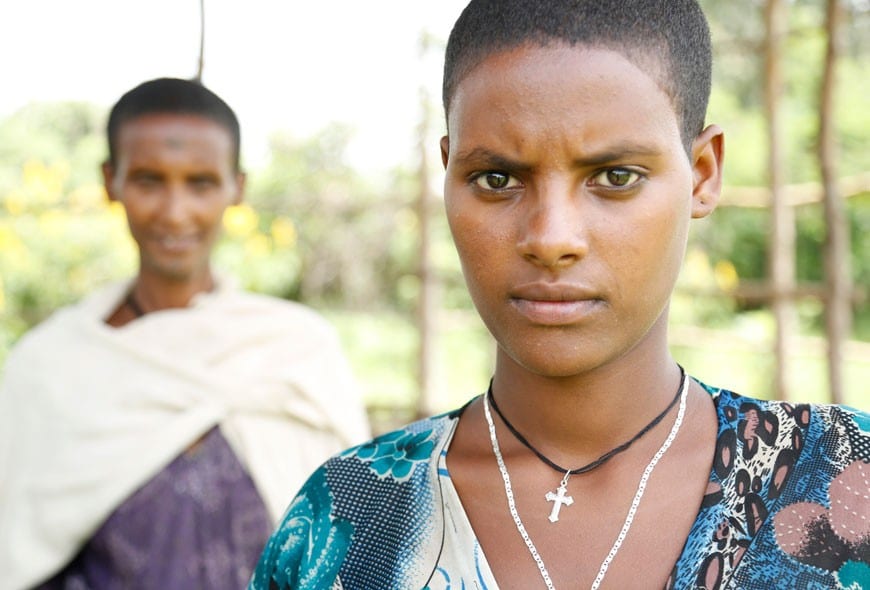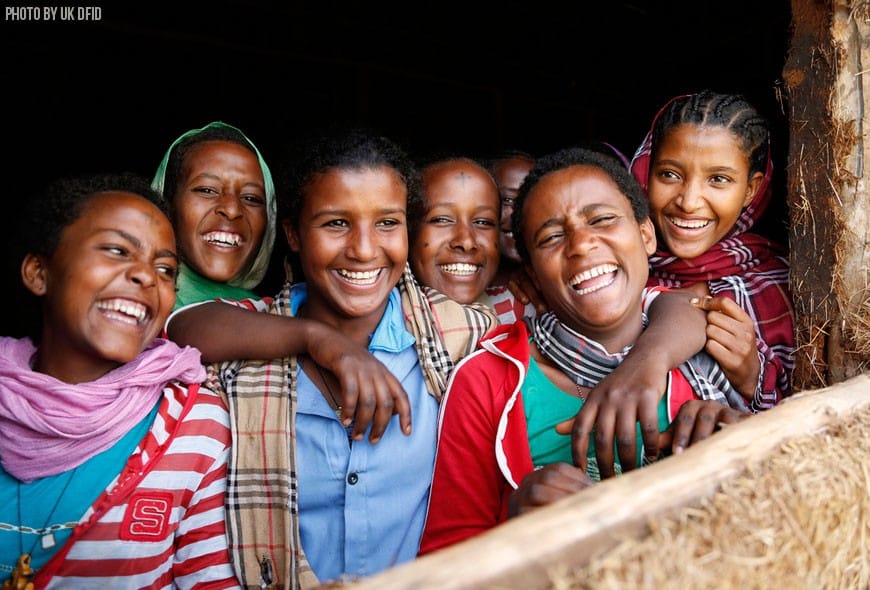Matrimonial Misery: Child Marriage in the Modern Day
By Melissa Jane Kronfeld & Molly Mintz
Every little girl dreams of her wedding day. The white gown and lace veil, the champagne toasts, friends and family, presents for a new home – not to mention eternal love.
But for some little girls, and even boys, the reality is much different. For them, a ceremony is not a celebration, but a business transaction, an exchange of a human being from his or her parents to a stranger or maybe a distant relative that they have never met before and who is 10, 20, possibly as much as 50 years their senior.
No one tells the child, maybe as young as five, what to expect when taken to their new home, or their matrimonial bed for the first time. They might even discover upon arriving that they are not the only wife, or that their husband has children their same age.
They will quickly learn to live only for the ‘Three Cs’ – cooking, cleaning and child rearing – while still just a kid themselves.
This is life of a child bride.
And this life is just one of thousands experienced by children daily; a reality for an estimated 41,000 girls under the age of 18 who are married across the world every day. It is the reality for 15 million children every year.
And girls are not the only victims. UNICEF estimates that 156 million boys and men alive today were forced into marriage under 18 years old; approximately 20 percent under 15 years old. Child marriage accounts for one in every four registered marriages – a statistic which does not include the untold number of unregistered unions, possibly occurring at an equal or greater rate.
I Do…? Marriage & The Rights of the Child
According to international law, child marriage is defined as the informal or formal union between an individual before the age of 18. Child marriage is prohibited by a series of binding international United Nations conventions, and although it is illegal in over 150 states, it remains one of the most prevalent forms of slavery today.
Legal loopholes permitting parental consent (but which do not require the consent of the child being married), as well as cultural beliefs held by numerous societies that adulthood is defined by physical maturation or puberty, ensures that child marriage is as common in the ungoverned territories of Southeast Asia and the Middle East, as it is in rural Middle America, or in the sleepy towns of Western Europe.
Child marriage not only corrupts the moral fabric of our society – it also has serious consequences for the world’s female population measured in terms of health, education, social development, and economics. States thrive when women are afforded equal opportunities. Wherever the gender equity balance is grossly disproportional, so too is the welfare of the nation.
“Child marriage is harmful in so many ways. The health consequences are serious,” Sonita Alizadeh, a 19-year-old Afghan anti-trafficking activist & hip-hop sensation, tells Millennial Magazine. “Girls who are still playing with dolls are having babies. Their bodies can’t handle it.”
“Their minds slowly die,” she added.
Breaking the Bonds of Precedent & Patriarchy
Encouragingly, cultural relativist arguments are quickly losing ground to a growing awareness of the stark reality and consequences of this crime.
One of the leaders in the fight is former Pakistani child bride and activist Naila Amin. Her story is unique in that she grew up in the United States. But not even the land of the free and the home of the brave was able to prevent the fear and bondage she suffered at the hands of her husband.
As an eight-year-old living in America, Naila was, as she says ‘branded,’ after her father promised her to a much older cousin as his future bride.
“There was no one for me to talk to,” she said. “No one knew what a child bride was.”
When she was just 15 years old, Naila was a married woman, living with whom she calls her ‘rapist.’
“It was a dark time in my life,” she tells us. “I tried to commit suicide, I didn’t want to live. But something kept telling me to live.”
That’s when the United States Embassy in Pakistan got involved and Naila was able to return home and begin the long process of healing from Post-Traumatic Stress Disorder (PTSD), raising her young son, and rebuilding a relationship with her parents, who she has forgiven. But the memories and pain remain.
“I’ll never be the same. I’ll never be that Naila,” she tells us. “It took my childhood, it took my laughter, it took a part of me, years away I can never get back. That’s something no one should have to go through.
“I didn’t commit a crime,” she remarked. “The only crime I committed was being born into a Pakistani-Pashtun family. That I was born a female.”
Warrior Brides: Child Marriage in Times of Conflict
Naila’s story has a happier ending than most. But little can be done for child brides in war zones, where marriage serves as a means of survival – sometimes for the warrior and sometimes for the ‘wife.’
It comes as no surprise then that the most unstable countries have the most child brides. In nations like India, Bangladesh, Nigeria, Brazil, Ethiopia, Pakistan, Indonesia, the Democratic Republic of the Congo, Mexico, Niger, Burma, Yemen, Syria, Somalia, Sudan and South Sudan, one in nine girls will be married before she turns 15.
This form of slavery is not only endemic, but systemic. Just ask musician and advocate Sonita, who was nearly one such victim. Now, 19 years old, Sonita grew up in the heart of Taliban country during the height of the war against terrorism, before becoming a refugee in Iran. Twice her parents planned to sell her into slavery, twice she escaped. Now re-settled in the U.S., Sonita uses music to empower victims and survivors of child marriage.
“Music is a way to understand what is happening around me,” she told us. “When I was younger, I was surrounded by war and pain. Writing about that helped me to deal with it. But even now, music helps me think about my life and the world in new ways.”
Her music video – featuring Sonita dressed in a bridal gown, bruised, bloody and with a barcode stamped on her forehead rapping about what girls really confront in a forced marriage – went viral.
“I want people to know that this is solvable problem,” Sonita explains. “It will take time and the effort of communities, families, religious leaders and world leaders. It will take people’s attention and care, but it can be solved. There is so much at stake. We have to end child marriage.”
And that’s because Sonita’s story is not unique.
Conflict, now more so than culture, is creating a new generation of lost girls.
The Palestinian terrorist organization Hamas, for example, sponsors mass weddings for its fighters to teen and prepubescent girls as a recruitment tool and appeasement mechanism. In Uganda, Liberia, Rwanda, Nigeria and Sierra Leone, rebel fighters have kidnapped girls from rural villages, taking them as “bush wives” to serve their personal needs and maintain campsites at the front lines of their wars. Thousands of girls suffered this fate in Sierra Leone’s civil war during the 1990s alone.
Today’s modern terrorist organizations have followed suite. ISIS recruits young women to serve as ‘Jihadi Brides,’ taking girls as young as nine from territorial strongholds, families supporting the movement, or the orphans of slain Jihadis. And in some cases – like with the Yazidi people of Syria – they are simply abducted by force. The Syrian Observatory for Human Rights has reported over 300 Yazidi girls have become the “spoils of war.” Sold for $1,000 after a forced conversion to Islam, they are sent to the front lines to breed the next generation of ISIS troops, like cattle on a farm.
But terrorists do not just recruit child brides from among their supporters, or forcibly from surrounding populations. Just like modern human traffickers and predatory pedophiles, they have turned their attention to the Internet to recruit victims – many whom now come from as far as America and Europe.
Consider the story of the two Austrian girls, ages 15 and 16 who in 2014, after weeks of browsing online propaganda highlighting a ‘Disney-esque’ version of the ISIS war and tweeting back and forth with ISIS ‘freedom fighters,’ were manipulated into running away from home for an adventure romance of a lifetime. Neither an adventure or a romance awaited them. Rather they were enslaved and sexually exploited by ISIS fighters upon their arrival in Syria. As many as a dozen Western girls have followed suite in the past three years.
Lost Innocence: How the World is Growing Up to the Reality of Child Marriage
Some important successes have been achieved. The Special Court for Sierra Leone, created to address the atrocities committed in that country’s civil war, ruled in a case against the Revolutionary United Front that forced marriage is a crime against humanity, unique from other forms of sex crimes and slavery. In doing so, an important legal precedent was laid which has been used in cases against warlords from Chad and the former Yugoslavia. But nothing has been done to further fortify this law as an international standard outside the context of war.
There has also been a global push to end the practice by the United Nations, with child marriage having been included in its 2030 Sustainable Development Goals. This has been a critical platform for increasing awareness of, and providing the impetus for, action. But the UN is often slow to respond and its intricate bureaucracy can impede process and progress.
And making progress on the issue of child brides is now further compounded by the largest refugee crisis since the end of World War II. With 60 million people living in a state of vulnerable flux in the world today, child marriage is becoming increasingly common. This is particularly true among the displaced Syrian people – with some families selling their daughters to save her, while others sell their daughters to save themselves.
Divorcing Destiny: Leading the Fight for the Next Generation
Like with other forms of slavery, those fighting for the rights of child brides see the Internet as a critical tool.
“Technology and social media completely changed my life,” Sonita told us. “After I made my music video, I put it on YouTube. People watched it and shared it and that is how I ended up in the United States, at Wasatch Academy, with the help of an organization called Strongheart Group. Now I share my message about ending child marriage through Twitter and Facebook.”
“Social media is powerful,” she added. “We have the power to show each other what our lives are really like, the good and the bad. We can raise awareness and we can reach out to help each other so easily.”
But awareness is only half the battle. Child brides suffer unique traumas and require special, long-term and comprehensive care which will provide them with the medical and emotional support they require while equipping them with the educational, financial and social tools they will need to live and thrive as a survivor, not a victim, of child matrimonial slavery.
That is why Naila established the Naila Amin Foundation, the first ever non-profit to exclusively serve the needs of those in the U.S. transitioning out of child marriage.
“These girls are not alone, and they need to know that,” Naila says. “You are not alone anymore, you’re not alone in this fight. And it’s okay to ask for help.”
Just like Naila, Sonita knows the importance of support. Having been afforded the opportunity to settle in America and pursue an education she explains, “I know that I have a future, and with my future I hope I can help more girls. This motivates me to keep going.”
Interested in learning more about Child Marriage? Check out the work being done by Girls Not Brides and the International Center For Research on Women. Watch documentaries on the topic from the BBC and PBS, and visit Too Young To Wed, a virtual multimedia project from the United Nations Population Fund. Pick up the book Stolen Innocence: My Story of Growing Up in a Polygamous Sect, Becoming a Teenage Bride, and Breaking Free of Warren Jeffs by Elissa Wall or download the free report, Ending Child Marriage: How Elevating the Status of Girls Advances U.S. Foreign Policy Objectives from the Council on Foreign Relations. Then check out this speech co-author Melissa Jane Kronfeld delivered on the topic for the United Nations NGO Committee on Sustainable Development, and be sure to follow child bride activists Sonita and Naila on Twitter.
This is the third article in a 10-part series highlighting modern slavery and trafficking in the 21st Century. Read Part One here and Part Two here. Check back with Millennial Magazine over the coming months to learn more about this critical issue and how you can join the movement to #EndSlaveryNow.




